Guerrero is a Mexican state located on the southwestern coast of the country, known for its stunning beaches, lush rainforests, and diverse wildlife. The region is home to an impressive variety of bird species, with over 500 recorded species found in the state.
From colorful parrots and tiny hummingbirds to majestic eagles and hawks, bird enthusiasts are sure to find a fascinating collection of avian creatures in Guerrero’s great outdoors.
This article will provide a comprehensive list of some of the most commonly found bird species in Guerrero, along with a brief description of their unique characteristics and habitats.
1. Ruddy Ground Dove
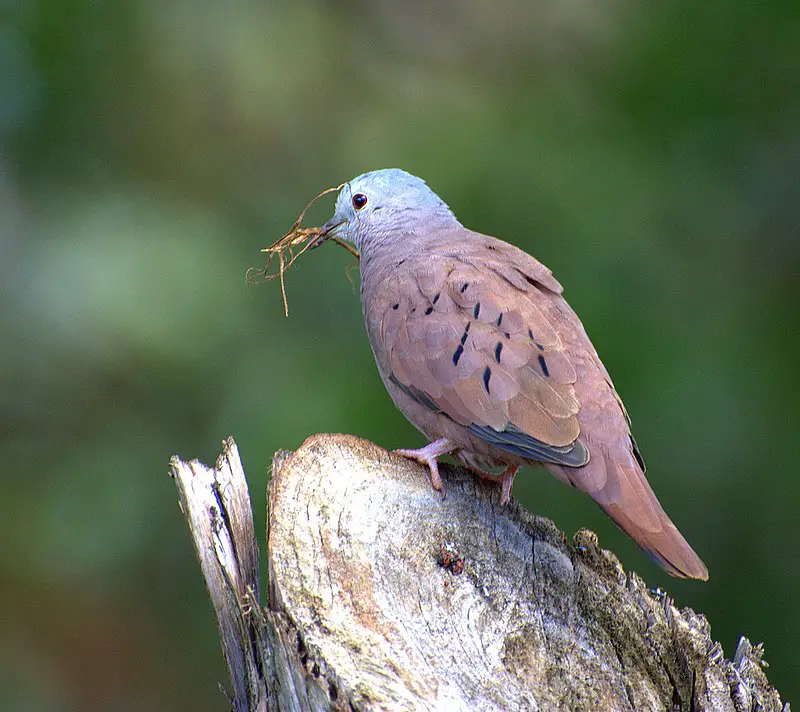
The Ruddy Ground Dove is a small New World tropical bird, found across Mexico and South America as far south as Argentina. It is also seen in the southwestern United States during winter months.
This ground dove typically lives in scrub or other open habitats such as savannas and grasslands, where it feeds on seeds from plants like cactus fruits.
Its plumage ranges from grey to reddish-brown with a light tan breast and black markings throughout its wings and tail feathers.
The male has more distinguishable colouration than the female but both sexes have bright red eyes which give this species its name – ‘ruddy’.
They are often observed perching low to the ground near food sources or nesting sites while also being quite vocal when flying between locations making them easier to spot.Scientific classification:
| Kingdom | Animalia |
| Phylum | Chordata |
| Class | Aves |
| Order | Columbiformes |
| Family | Columbidae |
| Genus | Columbina |
| Species | C. talpacoti |
Also Featured In: Top Birds Found in Mexico, Most Common Birds in South America Birds
2. Green Kingfisher
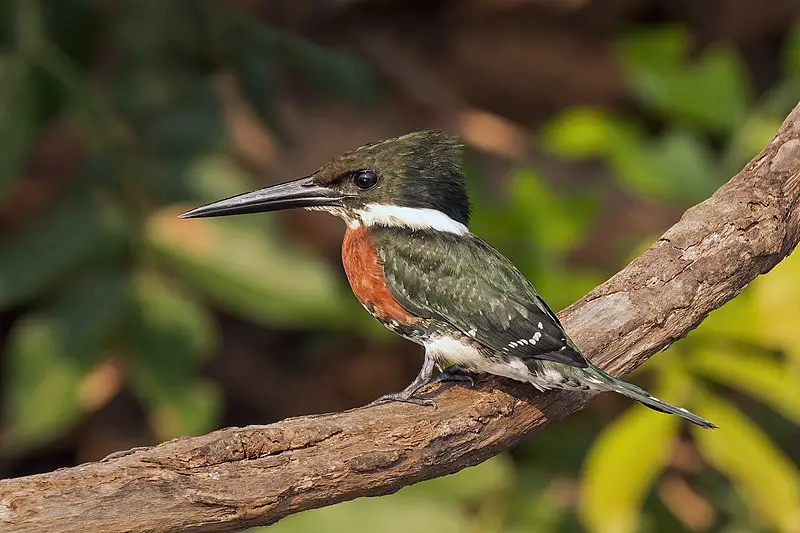
The Green Kingfisher is an incredibly vibrant bird, boasting a bright green plumage and long beak.
It can primarily be found throughout Central America, in most South American countries except Chile, as well as Texas in the United States and Trinidad & Tobago.
This species of water kingfisher belongs to subfamily Cerylinaeof family Alcedinidae which was first described by German naturalist Johann Friedrich Gmeiner back in 1788.
The Green Kingfishers are known for their active hunting habits where they perch above shallow waters looking out for prey such as small fish or crustaceans before diving down rapidly into the water with a loud splash.Scientific classification:
| Kingdom | Animalia |
| Phylum | Chordata |
| Class | Aves |
| Order | Coraciiformes |
| Family | Alcedinidae |
| Subfamily | Cerylinae |
| Genus | Chloroceryle |
| Species | C. americana |
Also Featured In: Most Common Birds Found in Chile, Birds You’ll Find in South Texas
3. Black-Vented Oriole
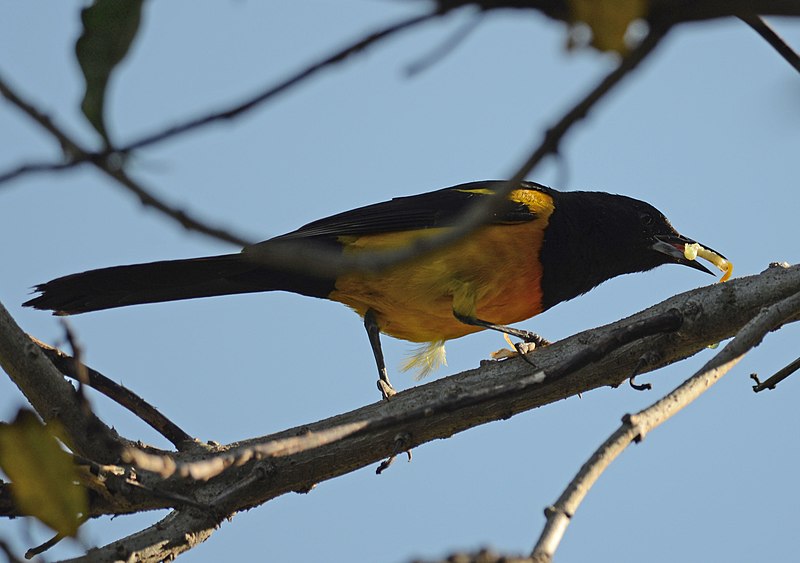
The Black-vented oriole is a striking species of bird that can be found in El Salvador, Guatemala, Honduras, Mexico, Nicaragua and the United States. It has black upperparts with yellow underparts and white wing spots on its wings.
The male also has an orange head patch while females have brown heads. This species prefers to live in dry or moist forests ranging from lowland to montane elevations.
They feed mainly on insects but may also eat some fruit such as berries or figs when available during certain times of year.
As they are quite active birds they require plenty of space which makes them ideal for larger aviaries if kept as pets.Scientific classification:
| Kingdom | Animalia |
| Phylum | Chordata |
| Class | Aves |
| Order | Passeriformes |
| Family | Icteridae |
| Genus | Icterus |
| Species | I. wagleri |
Also Featured In: Most Beautiful Birds in Guatemala,
4. Pauraque
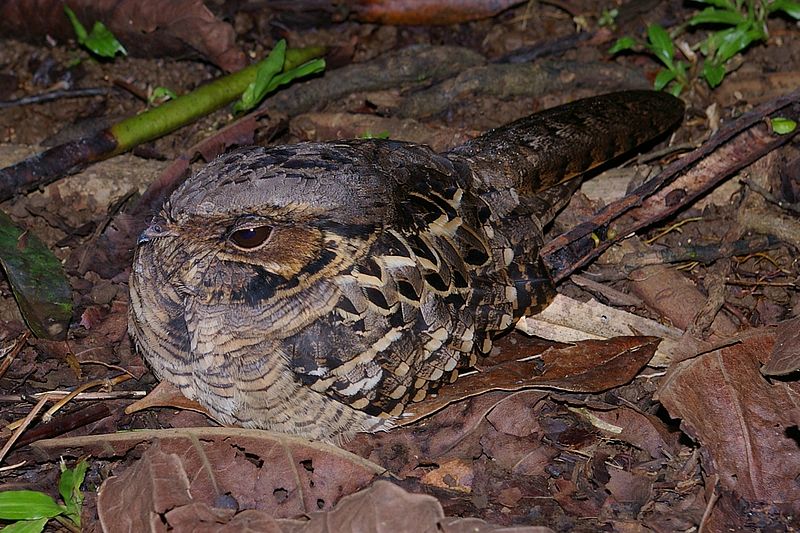
The Pauraque is a nightjar species belonging to the genus Nyctidromus and found in subtropical and tropical regions of the New World. It was formally described by German naturalist Johann in 1789.
Possessing unique features such as distinct white patches on its neck, it has adapted well to living near human settlements; making no noise during day time while roosting among tree branches or low shrubs in open areas with sparse vegetation like pastures, savannahs etc.,
The Pauraque feeds mainly on insects which helps reduce pest populations around agricultural fields.
This bird also plays an important role in maintaining healthy ecosystems across its range due to their habitat preferences for different stages of forest succession, from secondary growth forests to grasslands and scrublands.Scientific classification:
| Kingdom | Animalia |
| Phylum | Chordata |
| Class | Aves |
| Order | Caprimulgiformes |
| Family | Caprimulgidae |
| Genus | Nyctidromus |
| Species | N. albicollis |
Also Featured In: Colorful Birds of Nicaragua, Rainforest Birds You Should Know
5. Blue-Black Grassquit
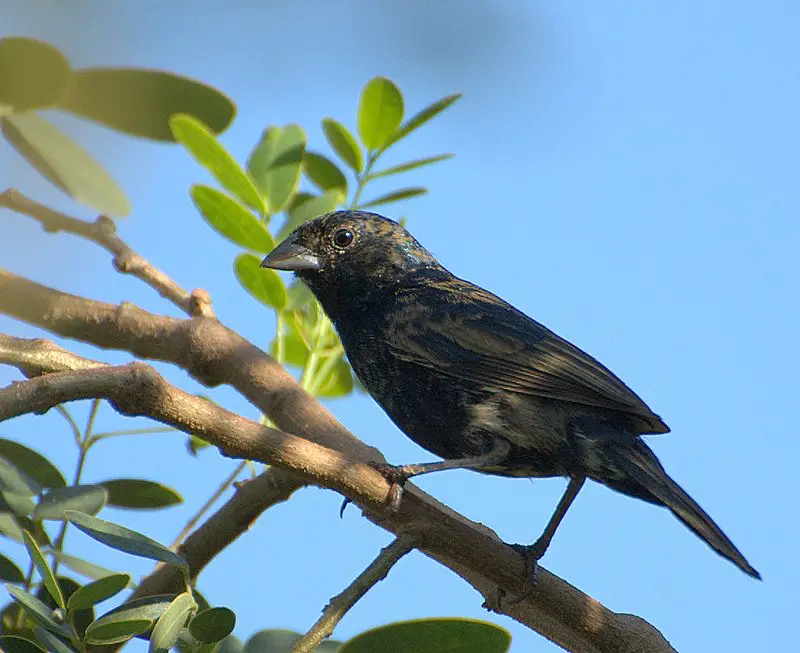
The Blue-black Grassquit is a small and vibrant bird belonging to the tanager family, Thraupidae.
It has an extremely wide range of distribution stretching from southern Mexico all the way through Central America and South America as far south as northern Chile, Argentina and Paraguay.
The male of this species features glossy blue-black feathers with yellowish primaries whereas females are less brightly coloured having predominantly greyish brown plumage.
They feed on insects such as ants, grasshoppers and beetles along with some grains they find in their habitats which include open woodlands near water sources or marshes.
These birds build nests made out of leaves lined with soft material like hair or wool at low level vegetation often close to water bodies where they can raise clutches up to two times during breeding seasons depending upon weather conditions around them.Scientific classification:
| Kingdom | Animalia |
| Phylum | Chordata |
| Class | Aves |
| Order | Passeriformes |
| Family | Thraupidae |
| Genus | Volatinia Reichenbach, 1850 |
| Species | V. jacarina |
Also Featured In: Trinidad and Tobago birds, Puerto Vallarta Birds You Should Know
6. Collared Plover
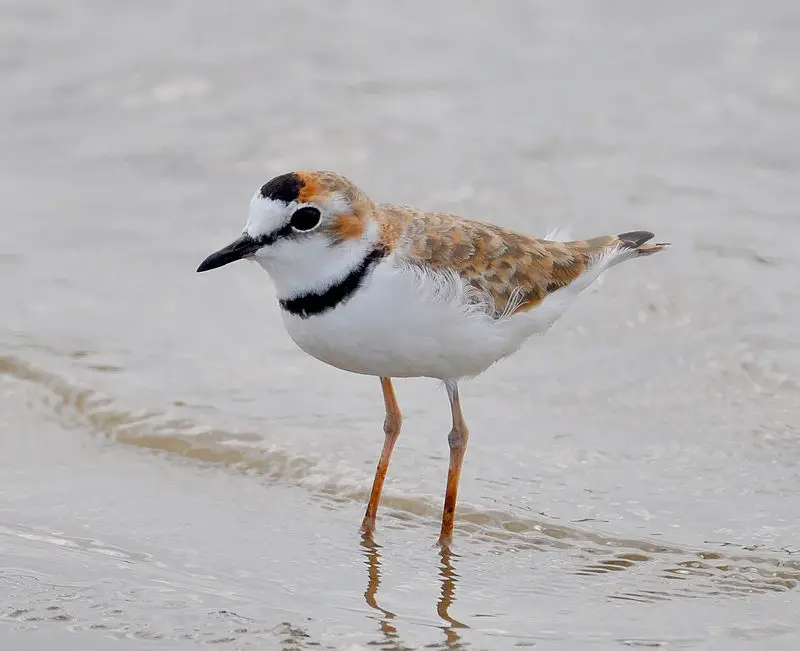
The Collared Plover is a small shorebird found along coasts and riverbanks of the tropical to temperate Americas, from central Mexico down to Chile and Argentina.
This plover measures 18 cm in length with an average weight of 35g; it has brown upperparts contrasting with white underparts all year round.
The adult plumage shows a black breast patch that can be seen clearly when they fly away or take off.
Although their population is decreasing due to habitat destruction, these birds have adapted well by learning how to live near human settlements where food sources are more plentiful.
They feed on insects, larvae, worms and other invertebrates while searching for them among mudflats, beaches or riversides.Scientific classification:
| Kingdom | Animalia |
| Phylum | Chordata |
| Class | Aves |
| Order | Charadriiformes |
| Family | Charadriidae |
| Genus | Charadrius |
| Species | C. collaris |
Also Featured In: Barbados Birds, Most Common Oaxaca Birds
7. Citreoline Trogon
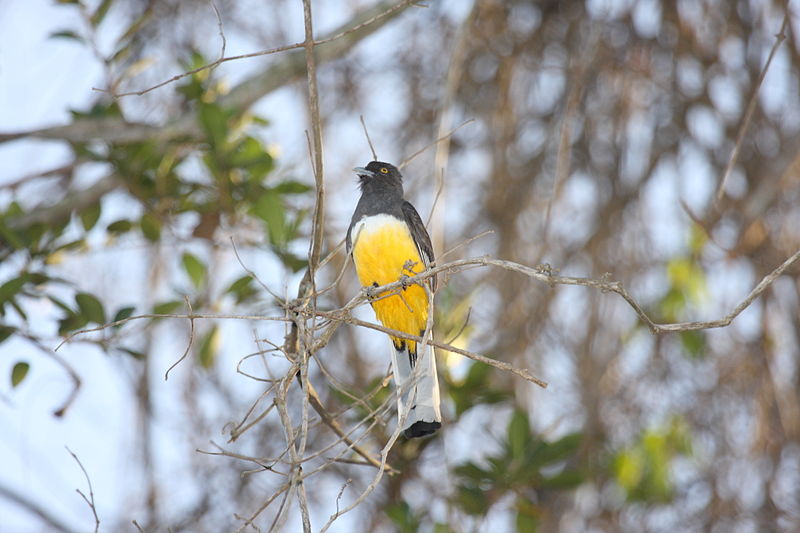
The Citreoline trogon bird is a species of bird in the Trogonidae family. It is found only in Western Mexico and has a vast estimated distribution size.
This has led to the IUCN classifying the species as least concern regarding conservation concerns, and its population trend as stable.
The bird has been studied as an ecosystem engineer, but there is not much other knowledge available about this species.Scientific classification:
| Kingdom | Animalia |
| Phylum | Chordata |
| Class | Aves |
| Order | Trogoniformes |
| Family | Trogonidae |
| Genus | Trogon |
| Species | T. citreolus |
Also Featured In: Birds that Live in Jalisco Birds, Most Common Birds Found in Nayarit
8. Bronzed Cowbird
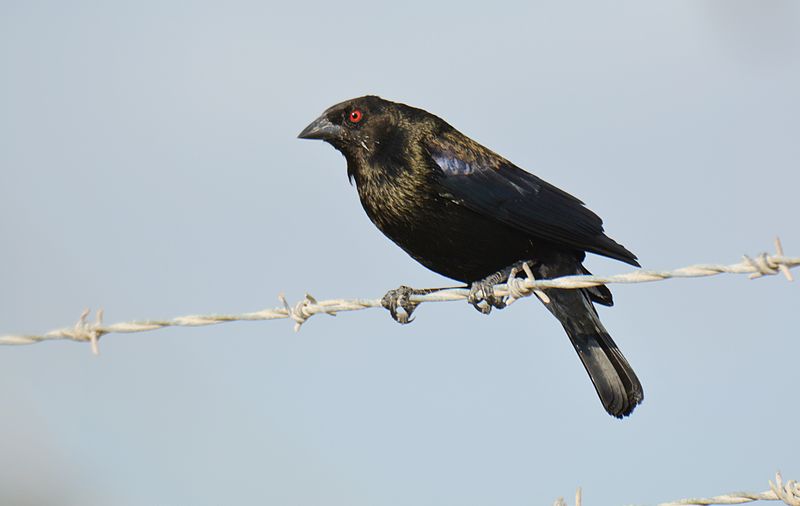
The bronzed cowbird is a small icterid species that was formerly known as the red-eyed cowbird. They are found breeding in several states of the US and many Central American countries, including Panama.
You may often spot them in farmland, brush, and feedlots, where they tend to forage. These birds prefer open habitats when not breeding and roost in dense woods.
They exhibit brood parasitism, laying their eggs in other bird species’ nests, and leaving their young ones to be reared by the host birds.
The bronzed cowbird’s diet mainly comprises seeds, grains, and insects. These birds are known for their metallic green and bronze plumage and their characteristic high-pitched whistle, which they use for communication.
They make an interesting addition to the avian diversity of their range.Scientific classification:
| Kingdom | Animalia |
| Phylum | Chordata |
| Class | Aves |
| Order | Passeriformes |
| Family | Icteridae |
| Genus | Molothrus |
| Species | M. aeneus |
Also Featured In: Birds You’ll Find in the Rio Grande Valley, Native Birds in Lower Rio Grande Valley
9. Lesser Roadrunner
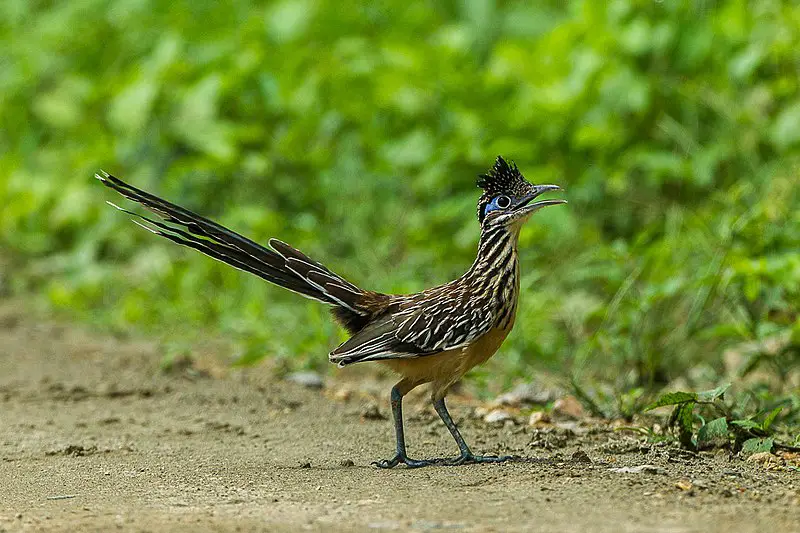
The Lesser Roadrunner bird is a member of the cuckoo family, measuring up to 51 cm long with a tail length of about 24 cm. The bird is slender and has long legs, earning it the Latin name “swift earth-cuckoo”.
Found in Mesoamerica, it is one of two species in the genus Geococcyx, the other being the Greater Roadrunner.
The Lesser Roadrunner is known for its swift movements and is an excellent runner, running at a speed of 24 km/h.
The bird has a pale brown body with dark stripes, making it well camouflaged in its habitat. It primarily feeds on insects, small reptiles, and rodents.
Despite its name, the Lesser Roadrunner is by no means “lesser” in its abilities and provides an important ecological role in its ecosystem as a predator and seed-disperser.Scientific classification:
| Kingdom | Animalia |
| Phylum | Chordata |
| Class | Aves |
| Order | Cuculiformes |
| Family | Cuculidae |
| Genus | Geococcyx |
| Species | G. velox |
Also Featured In: Birds that You’ll Find in Chiapas,
10. Banded Quail
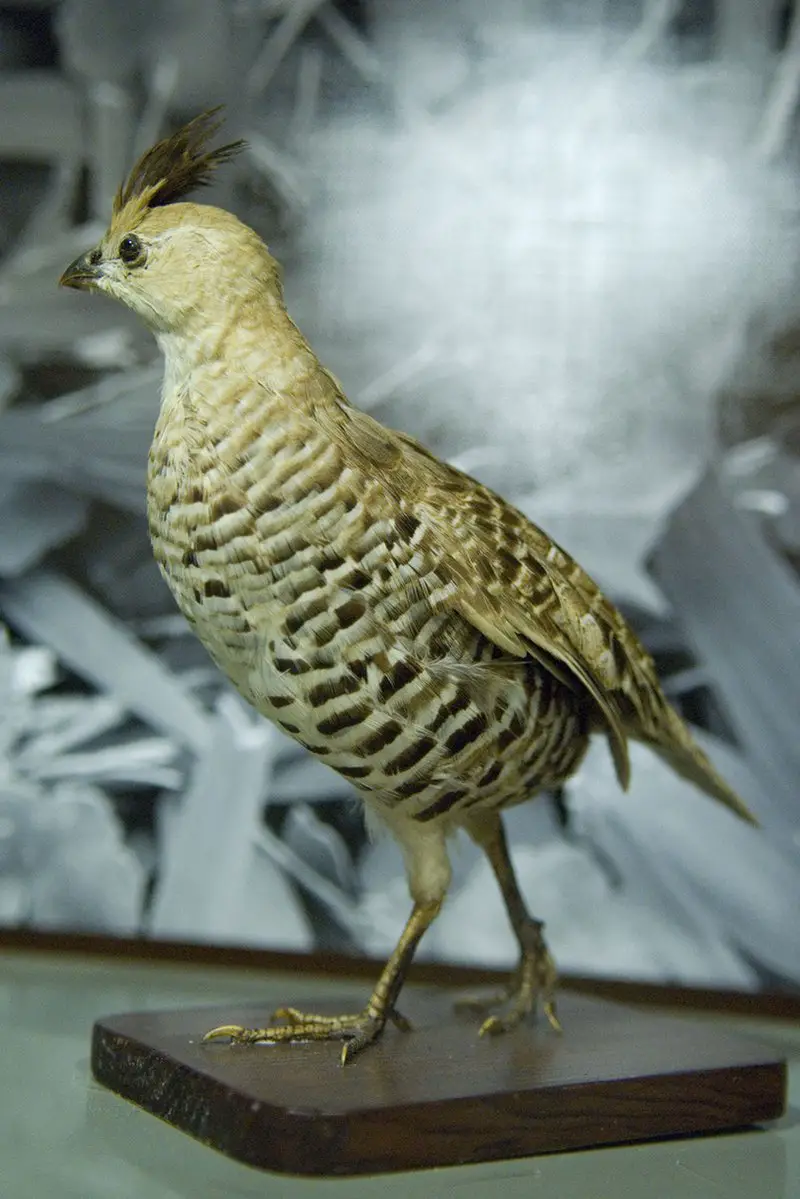
The banded quail is a brown bird found only in Mexico. It lives in subtropical or tropical dry forests, shrublands, and degraded former forests. It has a long tail and can be hard to spot.Scientific classification:
| Kingdom | Animalia |
| Phylum | Chordata |
| Class | Aves |
| Order | Galliformes |
| Family | Odontophoridae |
| Genus | Philortyx Gould, 1846 |
| Species | P. fasciatus |
11. Cinnamon-Rumped Seedeater
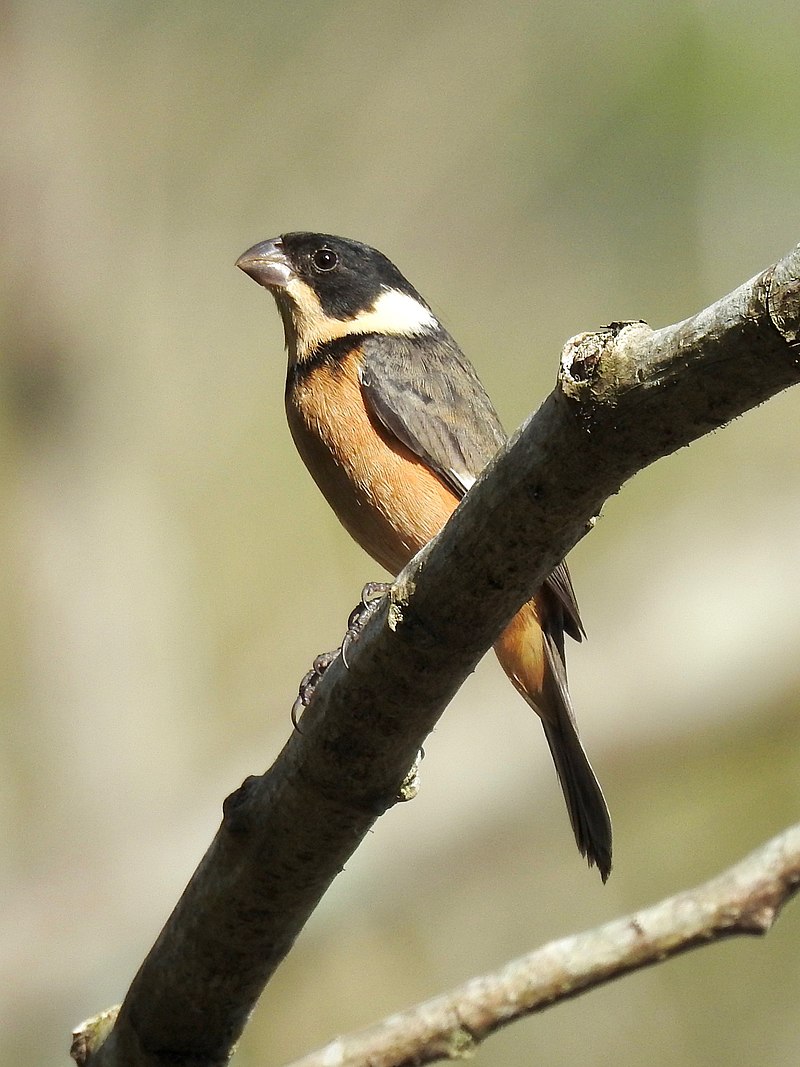
The cinnamon-rumped seedeater is a type of passerine bird that belongs to the Sporophila genus. This small bird is closely related to other Sporophila species based on genetic studies.
Formerly part of the white-collared seedeater species, the cinnamon-rumped seedeater is one of two resulting species after the split. The other species is now called Morelet’s seedeater.
The cinnamon-rumped seedeater is easily recognizable by its cinnamon-colored rump, which is one of its distinct features. These birds are primarily seed eaters but may also feed on insects.
They are typically found in grasslands and open areas with low vegetation.
Overall, the cinnamon-rumped seedeater is a fascinating bird species that is known for its unique appearance and behavior.Scientific classification:
| Kingdom | Animalia |
| Phylum | Chordata |
| Class | Aves |
| Order | Passeriformes |
| Family | Thraupidae |
| Genus | Sporophila |
| Species | S. torqueola |
Also Featured In: Common Birds of Mexico City, Birds that Live in Morelos